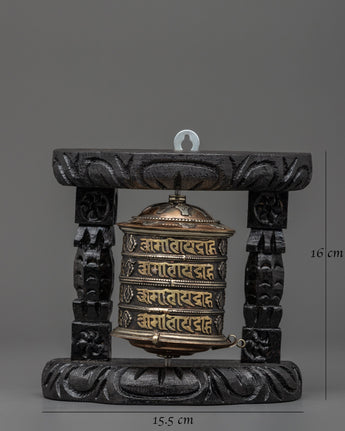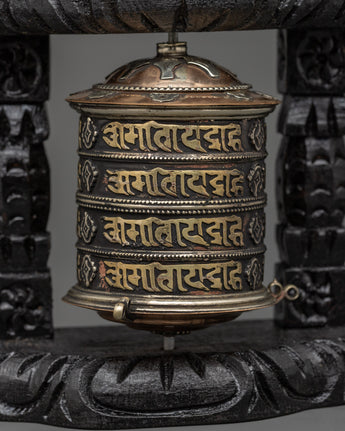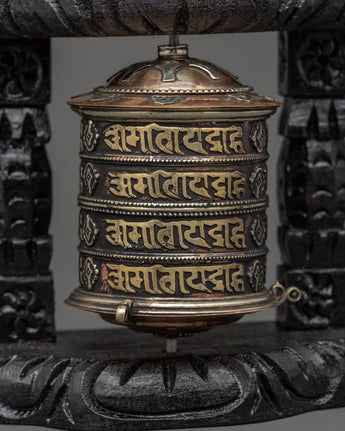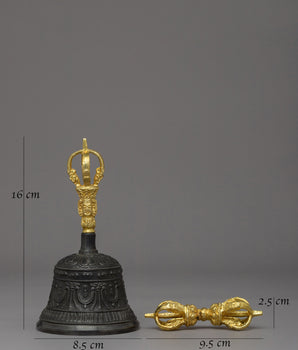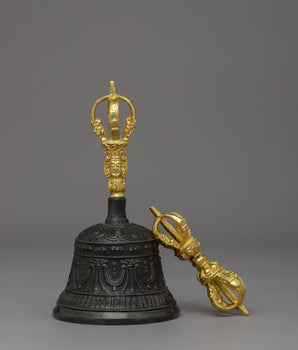

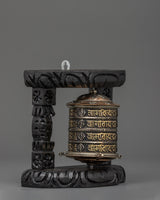
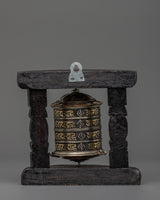
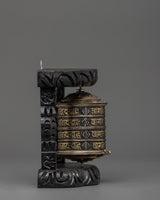
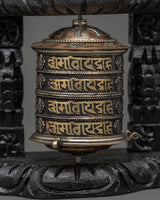

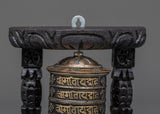
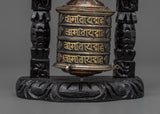
Sacred Mantra Prayer Wheel | Spiritual Blessings & Altar Use
Sacred Mantra Prayer Wheel - Buddhist Altar & Meditation Decor
--------------------------------------------------------
Size: 16cm (Height) x 15.5cm (Width)
Weight: 0.36kg
Materials: Copper Body, Brass Body, White Metal, Wood
--------------------------------------------------------
About our Prayer Wheel
This handcrafted Sacred Mantra Prayer Wheel, a powerful symbol of compassion and spiritual focus, will help you introduce peace and sacred energy into your daily practice. This prayer wheel, 16cm in height and 15.5cm in width, features the revered "Om Mani Padme Hum" mantra engraved in traditional writing. The spinning action of the wheel is thought to multiply the effects of the mantra, dispersing spiritual blessings with each rotation.
Crafted from copper, brass, and white metal, and set in a finely carved wooden frame, this prayer wheel is ideal for tabletop use or wall display. Weighing only 0.36 kg, it is both lightweight, making it suitable for home altars, personal meditation areas, or as a meaningful spiritual gift. The use of metals and wood creates both visual harmony and energetic grounding, making it a useful sacred tool.
Introduction to Prayer Wheel
A prayer wheel is a cylindrical device on a spindle, used in Tibetan Buddhism. It is typically inscribed with the mantra "Om Mani Padme Hum" and rotated by hand as a form of spiritual practice and to accumulate merit. Spinning the wheel is believed to have the same spiritual benefits as verbally reciting the mantra. The use of prayer wheels is widespread in Tibetan Buddhism and has spread to other cultures.
How does the Buddhist Prayer Wheel benefit us?
The benefits associated with rotating the wheel are numerous. It promotes knowledge, compassion, and bodhicitta in the practitioner, and enhances siddhis (spiritual powers, such as clairvoyance and precognition). The practitioner can repeat the mantra as often as possible while the wheel is rolling, maintaining a calm, meditative attitude. A Tibetan Buddhist tradition holds that after a practice session, one should dedicate any acquired merits to the benefit of all sentient beings. Then three times Om Ah Hum. This is usually among Tibetans after finishing any Buddhist practice, including the prayer wheel exercise.
How do you set up your own Buddhist Shrine?
• Find a clean, quiet, and uncluttered spot
• Set up an altar table and cover it with an altar cloth that calls to you
• Place your sacred item at the center


